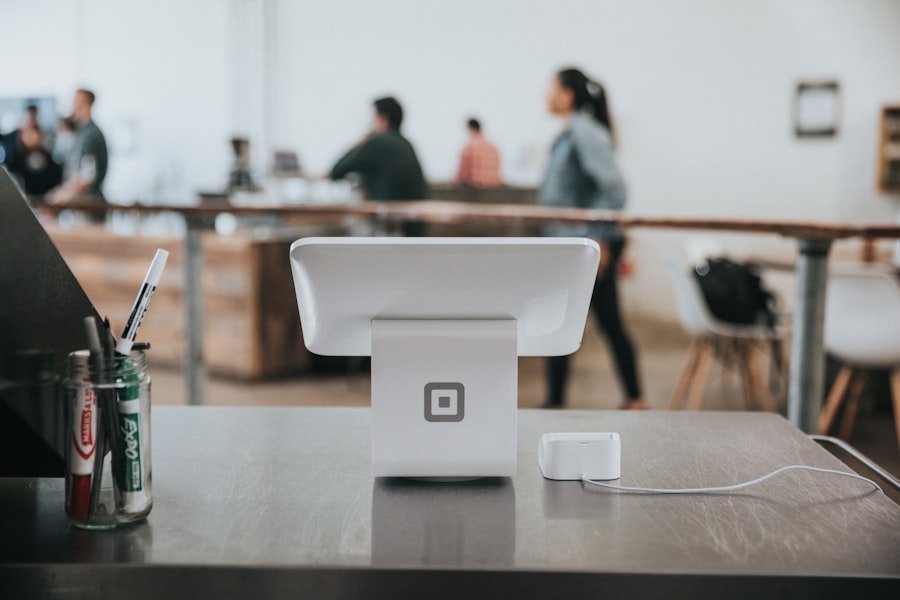Point of Sale (POS) systems have become an integral part of modern retail and service environments, serving as the nexus where transactions occur. Traditionally, the term referred to the physical location where a customer completes a purchase, but with technological advancements, it has evolved into a sophisticated amalgamation of hardware and software designed to facilitate sales, manage inventory, and enhance customer interactions. The evolution of POS systems has been driven by the need for businesses to streamline operations, improve efficiency, and provide a seamless shopping experience for customers.
In the contemporary landscape, POS systems encompass a wide range of functionalities beyond mere transaction processing. They can track sales data, manage customer relationships, and even integrate with e-commerce platforms. This transformation has been propelled by the increasing demand for real-time data analytics and the necessity for businesses to adapt to changing consumer behaviours.
As such, understanding the intricacies of POS systems is essential for any business aiming to thrive in today’s competitive marketplace.
Summary
- POS systems are essential for businesses to process transactions and manage sales data efficiently.
- Components of a POS system include hardware such as a cash register and barcode scanner, as well as software for inventory management and sales reporting.
- Using POS systems can benefit businesses by improving accuracy, saving time, and providing valuable sales data for decision-making.
- Different types of POS systems include traditional systems, mobile systems, and cloud-based systems, each with their own unique features and benefits.
- POS systems improve customer experience by enabling faster transactions, accurate pricing, and the ability to accept various payment methods.
Understanding the Components of POS Systems
A typical POS system comprises several key components that work in concert to facilitate transactions and manage business operations. At its core, the hardware includes devices such as cash registers, barcode scanners, receipt printers, and payment terminals. These components are designed to ensure that transactions are processed quickly and accurately.
For instance, barcode scanners enable swift item identification, reducing wait times at checkout and enhancing overall efficiency. On the software side, POS systems are equipped with applications that handle various functions such as sales tracking, inventory management, and customer relationship management (CRM). The software can be cloud-based or locally installed, with cloud solutions offering the advantage of remote access and real-time updates.
This flexibility allows businesses to monitor sales performance and inventory levels from anywhere, making it easier to make informed decisions. Additionally, many modern POS systems come with integrated analytics tools that provide insights into customer behaviour and sales trends, enabling businesses to tailor their offerings accordingly.
Benefits of Using POS Systems for Businesses

The adoption of POS systems brings a multitude of benefits that can significantly enhance business operations. One of the most notable advantages is the improvement in transaction speed and accuracy. With automated processes in place, errors associated with manual entry are drastically reduced.
This not only expedites the checkout process but also enhances customer satisfaction as they experience shorter wait times. Moreover, POS systems provide valuable data analytics that can inform strategic decision-making. By analysing sales patterns and customer preferences, businesses can optimise their inventory management and marketing strategies.
For example, if a particular product consistently sells well during specific seasons, businesses can adjust their stock levels accordingly to meet demand. Additionally, POS systems can help identify underperforming items, allowing for timely promotions or discontinuation decisions. This data-driven approach empowers businesses to be more agile and responsive to market trends.
Different Types of POS Systems Available
The market offers a diverse array of POS systems tailored to meet the unique needs of various industries. Traditional retail environments often utilise fixed POS systems that consist of a stationary terminal equipped with all necessary hardware components. These systems are typically found in brick-and-mortar stores where high transaction volumes are expected.
Conversely, mobile POS (mPOS) systems have gained popularity in recent years, particularly among businesses that require flexibility and mobility. These systems allow transactions to be processed via smartphones or tablets, enabling sales associates to assist customers anywhere within the store or even outside it during events or markets. mPOS solutions are particularly beneficial for small businesses or those with limited space, as they often require less hardware and can be set up quickly.
Another emerging category is cloud-based POS systems, which offer significant advantages in terms of accessibility and scalability. These systems store data on remote servers rather than on local devices, allowing business owners to access their information from any internet-enabled device. This is particularly advantageous for multi-location businesses that need to manage operations across various sites seamlessly.
How POS Systems Improve Customer Experience
Enhancing customer experience is a primary focus for many businesses today, and POS systems play a pivotal role in achieving this goal. One of the key ways they do so is through personalised service. By integrating customer relationship management features into their POS systems, businesses can collect and analyse customer data over time.
This information enables them to tailor promotions and recommendations based on individual purchasing habits, thereby fostering a more personalised shopping experience. Additionally, the speed and efficiency of transactions facilitated by modern POS systems contribute significantly to customer satisfaction. Long queues can deter customers from making purchases; however, with streamlined processes in place—such as quick scanning of items and efficient payment processing—customers can complete their transactions swiftly.
Furthermore, many POS systems now support various payment methods, including contactless payments and mobile wallets, catering to diverse customer preferences and enhancing convenience.
Integrating POS Systems with Inventory Management

The integration of POS systems with inventory management is another critical aspect that enhances operational efficiency for businesses. When these two systems work together seamlessly, it allows for real-time tracking of stock levels and sales data. As items are sold through the POS system, inventory levels are automatically updated, reducing the risk of stockouts or overstock situations.
This integration also facilitates better forecasting and planning. Businesses can analyse sales trends alongside inventory data to make informed decisions about restocking and product offerings. For instance, if a particular item experiences a surge in sales during a specific period, businesses can proactively increase their orders to ensure they meet customer demand without delay.
Additionally, this level of insight helps in identifying slow-moving items that may require promotional efforts or adjustments in pricing strategies.
Security Features of POS Systems
As businesses increasingly rely on digital transactions, the security of POS systems has become paramount. Modern POS solutions incorporate various security features designed to protect sensitive customer information and prevent fraud. One such feature is end-to-end encryption (E2EE), which ensures that payment data is encrypted from the moment it is entered until it reaches the payment processor.
This significantly reduces the risk of data breaches during transactions. Furthermore, many POS systems now include tokenisation technology that replaces sensitive card information with unique identifiers or tokens during transactions. This means that even if data is intercepted during transmission, it cannot be used without the corresponding tokenisation key.
Regular software updates are also crucial for maintaining security; reputable POS providers frequently release patches to address vulnerabilities and enhance system integrity. Additionally, user access controls are essential for safeguarding against internal threats. Businesses can set permissions based on employee roles, ensuring that only authorised personnel have access to sensitive information or critical system functions.
This layered approach to security helps mitigate risks associated with both external attacks and internal misuse.
Future Trends in POS Systems Technology
The landscape of POS technology is continually evolving, driven by advancements in digital innovation and changing consumer expectations. One prominent trend is the increasing adoption of artificial intelligence (AI) within POS systems. AI can enhance data analytics capabilities by providing predictive insights into customer behaviour and sales trends.
For instance, AI algorithms can analyse historical sales data to forecast future demand more accurately, enabling businesses to optimise inventory levels proactively. Another significant trend is the rise of omnichannel retailing, where customers expect a seamless shopping experience across various platforms—be it online or in-store. Modern POS systems are adapting to this trend by integrating with e-commerce platforms and enabling features such as click-and-collect services or unified loyalty programmes that span both online and offline channels.
Moreover, as sustainability becomes a focal point for consumers, there is a growing emphasis on eco-friendly practices within retail environments. Future POS systems may incorporate features that allow businesses to track their carbon footprint or promote sustainable products more effectively. In conclusion, the evolution of Point of Sale systems reflects broader changes in consumer behaviour and technological advancements.
As businesses continue to seek ways to enhance efficiency and improve customer experiences, understanding the intricacies of these systems will be crucial for success in an increasingly competitive marketplace.
Point of Sale (POS) Systems are essential for businesses to efficiently process transactions and manage inventory. According to a case study on businesscasestudies.co.uk, asset management software plays a crucial role in strengthening security and risk management within organisations. By effectively tracking and monitoring assets, businesses can mitigate potential risks and ensure the safety of their valuable resources. This article highlights the importance of implementing robust software solutions to enhance overall security measures.
FAQs
What is a Point of Sale (POS) system?
A Point of Sale (POS) system is a combination of hardware and software that allows businesses to process transactions and manage sales. It typically includes a cash register, barcode scanner, receipt printer, and software for tracking sales, inventory, and customer information.
How does a POS system work?
A POS system works by capturing and recording sales data at the point of purchase. When a customer makes a purchase, the POS system processes the transaction, updates inventory levels, and generates a receipt. The system also provides reporting and analytics to help businesses track sales and manage their operations.
What are the benefits of using a POS system?
Using a POS system can help businesses improve efficiency, accuracy, and customer service. It can also provide valuable insights into sales trends, inventory management, and customer behaviour. Additionally, POS systems can integrate with other business tools such as accounting software and customer relationship management (CRM) systems.
What types of businesses can benefit from using a POS system?
POS systems are used by a wide range of businesses, including retail stores, restaurants, bars, cafes, and other businesses that process transactions. They are also used in industries such as hospitality, healthcare, and entertainment to manage sales and customer interactions.
What features should I look for in a POS system?
When choosing a POS system, it’s important to consider features such as inventory management, sales reporting, customer relationship management, and integration with other business tools. It’s also important to consider the hardware and software requirements that are specific to your business needs.
